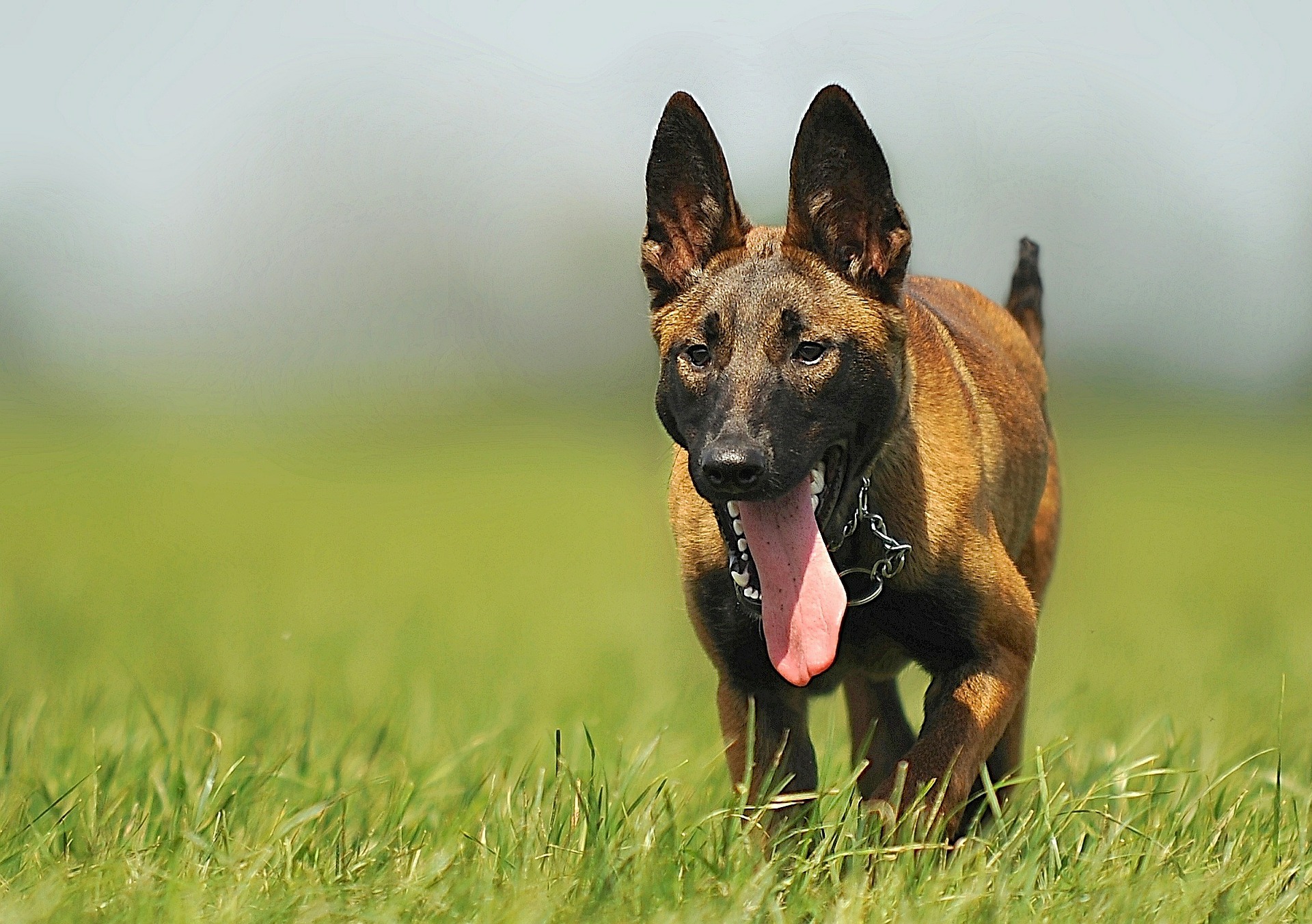We all know that there are a variety of common food allergies in humans, but what about in man’s best friend? Until recently, most people assumed that dogs could eat just about anything and be perfectly fine. In reality, however, many dogs can have severe allergic reactions to food that other dogs can eat perfectly fine.

When we’re training dogs in Bradenton, it’s one of the many things that we’re monitoring to make sure that your dog is comfortable, and at his very best in order to learn during his training sessions. If you are concerned about your dog and whether or not he might be having an allergic reaction to the food he’s eating, here are a few ways to tell if your dog has food allergies:
1. Check his skin for a reaction
Humans most often manifest their allergic reactions in swollen and itchy rashes on the surface of the skin. The same goes for dogs. If you see your dog scratching more than normal, it’s time to check his skin for hives or rashes.
While it can be difficult to determine what is being caused by a food allergy and what is being caused by the increased scratching, dry and itchy skin is one of the first indications that your dog is allergic to something he had been in contact with.
While it is possible, for example, that your dog has a grass allergy and is itchy from playing on the lawn, a dog that gets itchy and starts to scratch soon after eating is more likely to have a food allergy.
2. Look for infections
Dogs who have food allergies are more likely to have ear and skin infections than dogs that do not have food allergies. This is because they are more likely to scratch and introduce a bacteria into their ear or skin that can cause an infection.
In order to check your dog for infection, look in his ears. If you see redness, swelling, or a discharge from his ears, this could be the sign of an ear infection.
Check his skin for those same signs to determine if he might have a skin infection. Many skin infections also cause dogs to lose their fur at a higher rate than normal shedding, so look for that sign as well.
3. Pay attention to vomiting
If your dog’s body recognizes that something is wrong, it will likely start trying to expel the food that is causing the allergic reaction. One of the most common ways it does this is through vomiting.

While dogs may occasionally vomit if they eat too quickly or eat something that disagrees with them, dogs who vomit frequently are likely actually sick.
If you notice that your dog is vomiting frequently, it is time to take a look at the ingredients in his food and see if there is something he could be allergic to.
4. Track diarrhea
While there are plenty of reasons a dog might have diarrhea, if he often has diarrhea after eating, this could be linked to a food allergy. Consistent diarrhea after eating a particular food is a good indication that your dog’s body does not like that food and should not eat it anymore.
If you are seeing blood in your dog’s stool or tarry, black diarrhea, this is an indication of a serious problem and you should take your dog to see a vet immediately.
5. Start eliminating common allergens from your dog’s diet
Dogs are most often allergic to corn, wheat, and rice. Methodically eliminating one of these at a time can be a good way to determine if your dog is allergic to one of these ingredients. Start with just one, for example, corn. If you eliminate just corn from your dog’s diet and his allergies clear up, you can be fairly certain that he was allergic to the corn in his food.
Luckily, there are many types of dog food that are formulated specifically for allergy-prone dogs. Even if your dog isn’t necessarily allergic to that ingredient, he might have an intolerance (like lactose intolerance in humans) that ensures he’ll have a bad reaction if he eats it.
6. Avoid feeding your dog anything other than his food
Your dog might not be ingesting his allergen through his dog food. If your dog often gets scraps from the table or a piece of whatever you’re eating, this might be the source of his allergies. While trying to determine what he is allergic to, stop feeding him table scraps. He’s fine eating his food, it is likely that he was actually allergic to something he was being fed by hand.

7. Take your dog to a vet
If you have tried these other methods and your dog is still having an allergic reaction, it is time to take your dog to the vet. Many vets will perform allergy tests, which can help you determine what your dog is allergic to, so you can eliminate it from his diet.
They can also recommend other types of diets or identification methods that will help you prevent allergic reactions for your dog. If your dog has been having severe allergic reactions, your vet will be able to give you a diet and supplements that will help return your dog to full health.




